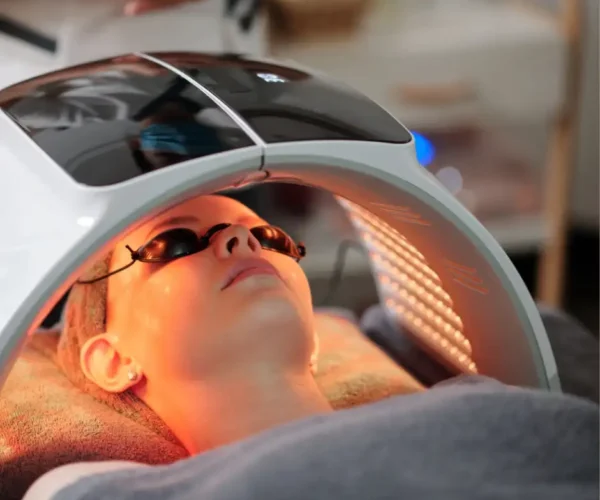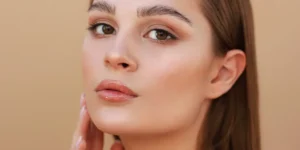Short answer: the lasers and medical light devices that reliably treat spider veins use specific visible and near-infrared wavelengths (often green/yellow to near-infrared), while home red or blue LED devices are used for supportive care rather than reliably removing vessels. Read on to understand why, what works, and what to expect.
Quick overview — what are spider veins and why light matters?
Spider veins (telangiectasias) are small, superficial blood vessels visible under the skin. They differ from varicose veins (larger, bulging veins) in size and depth. Laser and light treatments work by delivering energy at wavelengths that hemoglobin (the blood pigment) absorbs — that energy heats and collapses the targeted vessel so the body clears it away. If you’re asking what color LED light for spider veins, the clinically effective devices are designed around those hemoglobin absorption peaks rather than simply “red” or “blue” colors alone. :contentReference[oaicite:0]{index=0}
Which wavelengths and “colors” do doctors use?
Medical lasers and intense pulsed light (IPL) devices commonly use wavelengths roughly between 532 nm and 1064 nm to treat vascular lesions — that covers green/yellow (e.g., 532 nm KTP, 595 nm pulsed-dye laser) through near-infrared (1064 nm Nd:YAG). Shorter wavelengths (around the green/yellow range) are absorbed more strongly by hemoglobin and work well for superficial red vessels; longer near-infrared wavelengths penetrate deeper to reach bluish or deeper veins. :contentReference[oaicite:1]{index=1}
In plain language: the best “color” for destroying spider veins depends on the vessel depth and color. Superficial red telangiectasias often respond to green/yellow wavelengths; deeper or bluish veins respond better to near-infrared wavelengths like Nd:YAG. This is why multi-wavelength or device-specific approaches are common in clinics. :contentReference[oaicite:2]{index=2}
So — what color LED light for spider veins should *you* consider?
If your goal is clearance of visible spider veins, you’re usually better off seeking medically supervised treatments that use targeted wavelengths (532–595 nm or 1064 nm) delivered by lasers or IPL rather than generic consumer LED devices. Home red-LED or blue-LED gadgets are often marketed for veins, but their effectiveness at destroying vessels is limited compared with in-office lasers. :contentReference[oaicite:3]{index=3}
That said, some LED light types (especially near-infrared / red light used for photobiomodulation) may reduce inflammation, improve microcirculation, and ease symptoms like aching — useful as supportive therapy but not a proven replacement for sclerotherapy or laser ablation. If you’re wondering specifically about what color LED light for spider veins, think of two different goals: (A) vessel removal — specialized green/yellow and near-infrared lasers; (B) symptom relief / skin health — red/NIR LED photobiomodulation. :contentReference[oaicite:4]{index=4}
Red light: what it can — and can’t — do
The phrase red light therapy for varicose veins crops up a lot. Red and near-infrared light (roughly 600–900 nm) is used in photobiomodulation to reduce inflammation, support tissue repair, and sometimes improve circulation. Multiple lab and clinical studies suggest benefits for pain and healing, but strong, large trials proving red light will reliably remove spider or varicose veins are limited. In short: red light helps symptoms and skin health more than it destroys veins. :contentReference[oaicite:5]{index=5}
You’ll also see exact search phrases such as red light therapy spider veins before and after, red light therapy and spider veins, and red light therapy for veins in marketing. While case reports and small before-and-after galleries exist, randomized controlled evidence for clearance of visible vessels with consumer red LED devices is weak. Clinically, physicians rely on vascular lasers and sclerotherapy for predictable cosmetic results. :contentReference[oaicite:6]{index=6}
If your question is does red light therapy help varicose veins or does red light therapy help spider veins, the honest answer is: it can help symptoms and skin quality, but it is not a standalone, proven ablation method for most visible veins — discuss combined plans with a vein specialist. :contentReference[oaicite:7]{index=7}
Blue light: hype vs. reality
Blue light pens and consumer devices often claim to “zap” spider veins. Searches like blue light therapy for spider veins, blue light for spider veins, do blue light pens work for spider veins, and best at home blue light therapy for spider veins reflect a lot of marketing. Independent medical commentary, however, warns that blue light rarely penetrates deeply enough to reliably collapse blood vessels — and high-quality evidence for these pens is lacking. Harvard Health and other clinical sources caution that blue light typically doesn’t work well for varicose veins. :contentReference[oaicite:8]{index=8}
In practice, blue light devices may slightly improve very superficial red lines in some people, but they are not a substitute for sclerotherapy or laser therapy in most cases. So if you’re searching “what color LED light for spider veins” and considering blue devices, be skeptical of dramatic before-and-after claims without peer-reviewed evidence. :contentReference[oaicite:9]{index=9}
What treatments are considered gold-standard?
For cosmetic removal and reliable long-term outcomes, clinics most often use:
- Sclerotherapy — injection of a sclerosant into the vein to collapse it (guidelines and decades of practice support this). :contentReference[oaicite:10]{index=10}
- Laser/IPL therapy — devices tuned to hemoglobin-absorbing wavelengths (e.g., 532 nm, 595 nm, 1064 nm) are used depending on vessel depth and color. :contentReference[oaicite:11]{index=11}
- Endovenous thermal ablation (for larger varicose veins) — not for superficial spider veins but essential for underlying venous reflux disease. :contentReference[oaicite:12]{index=12}
Many patients benefit from a combined approach (e.g., treat feeding veins, then sclerose remaining telangiectasias). If you’re evaluating options, ask a board-certified dermatologist or vein specialist about which wavelength and technique are best for your skin type and vessel characteristics. :contentReference[oaicite:13]{index=13}
At-home devices: realistic expectations
Interest in at home light therapy for spider veins and devices marketed for home use is growing. For clarity:
- At-home red/NIR LED devices can improve skin tone and soreness but usually won’t clear medium or larger spider veins.
- Blue light pens marketed specifically for veins are unlikely to match clinical lasers in energy, penetration, or selective absorption, so results are unpredictable. (Search terms you may have seen include does red light help spider veins and can red light therapy help varicose veins.) :contentReference[oaicite:14]{index=14}
- If you use a home device, follow instructions, protect eyes, and accept that multiple sessions over months may be needed — and outcomes may be modest. :contentReference[oaicite:15]{index=15}
How to choose a clinic or device — practical checklist
If you want effective results, consider this short checklist:
- Get an assessment from a vein specialist: confirm whether veins are purely cosmetic or related to reflux.
- Ask which wavelength or device they plan to use — common effective wavelengths include 532 nm, 595 nm, 755 nm, and 1064 nm. :contentReference[oaicite:16]{index=16}
- Request to see before/after photos from the clinic (same lighting, same distance) and ask about likely number of sessions and downtime.
- If you’re considering home therapy, ask how it complements in-office treatment rather than replacing it — search phrases you might use include red light therapy spider veins before and after and is red light therapy good for varicose veins when researching. :contentReference[oaicite:17]{index=17}
Common questions answered
Does red light therapy help spider veins?
Red/NIR photobiomodulation can ease symptoms and support skin health but is not a reliably proven standalone method to remove spider veins for most people. It plays a supportive role in some treatment plans. :contentReference[oaicite:18]{index=18}
Does red light therapy help varicose veins?
For larger varicose veins, thermal ablation or other vascular procedures are standard. Red light may help symptoms but is not a substitute for definitive venous procedures. Searches like does red light therapy help varicose veins and can red light therapy help varicose veins reflect widespread interest but limited replacement potential. :contentReference[oaicite:19]{index=19}
Do blue light pens work for spider veins?
Evidence is limited and mixed; independent clinical sources advise caution. Blue light typically lacks sufficient tissue penetration to reliably close most visible telangiectasias. :contentReference[oaicite:20]{index=20}
When to see a specialist
See a vein specialist or dermatologist if you have pain, swelling, aching, skin changes (ulceration, discoloration), or large bulging veins. For purely cosmetic spider veins, an aesthetic consultation will clarify whether laser, sclerotherapy, or combined treatment is best. For medically established options and safety, clinicians follow guideline-based approaches. :contentReference[oaicite:21]{index=21}
How we can help — professional spider vein treatment
If you’d like an in-office evaluation and evidence-based treatment for spider veins, our clinic offers targeted options including sclerotherapy and laser treatments tailored to vessel type and skin tone. Learn about our spider vein treatment here: Spider Veins Treatment — Airmont, NY.

